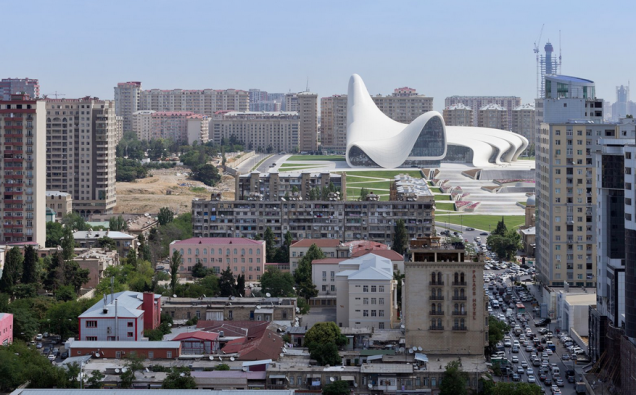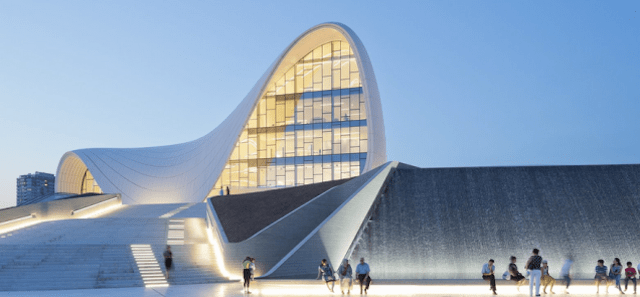Every year, London’s Design Museum chooses a single object, building, or piece of software and calls it the best-designed object of the year. It’s always fun to see what they choose: Last year it was a simple but brilliant government website. But this year’s winner, a cultural centre in Azerbaijan, raises more questions than it answers.
This is Iraqi-born, Britain-based architect Zaha Hadid’s Heydar Aliyev Centre, the winner of this year’s Design Award. This sinuous, hulking building sits on a patch of land in the capital city of Azerbaijan, offering locals access to a 1,000 auditorium and other cultural amenities under a steel space frame that supports the unusual geometry of the roofline.

Pictures: Iwan Baan.
According to the jurors, it’s “beautiful”, “iconic”, “stunning” and poetically, “as pure and sexy as Marilyn’s blown skirt”. In other words, it looks really cool. But beyond remarking upon the sheer beauty — and it is beautiful! — what do we know about this building as a piece of design?
For one thing, this was a building that was protested locally and abroad for what it represents, as The Architect’s Journal points out today. It’s named after Heydar Aliyev, who rose through the ranks of the KGB to rule Azerbaijan as its third president. He was accused of many human rights abuses during his reign, ranging from rigging elections to using intimidation to curb dissent, until his death in 2003. “By taking on a commission named directly after Aliyev, she is reinforcing his cult of personality,” one Oxford historian on the region told BD Online in 2008.
When Aliyev died his son, Ilham Aliyev, took control of Azerbaijan. The younger Aliyev has steered the country from its post-Soviet form into an oil-rich power — and according to many analysts, he’s turned it into a hotbed of corruption and human rights abuses. Last year, Aliyev drew attention from around the world after the country’s Election Commission accidentally released the “results” of its “democratic” election a full 24 hours before voting began. Obviously, Aliyev won by a landslide. The BBC called him “the pre-determined president“.
Aliyev has used his country’s vast natural resources to built up Baku with buildings like Hadid’s — the budget for which has never been released. But those buildings have come at a high price to citizens. “The government continued its urban renewal campaign in the capital Baku, forcibly evicting hundreds of families without adequate compensation,” says Human Rights Watch in its most recent report on the country. “Torture and ill-treatment persists with impunity.”
This is a compelling building. And this is not to say that Zaha Hadid doesn’t design lovely, sprawling work. But design isn’t a byword for beauty. It isn’t just what something looks like. Great design solves real problems. It doesn’t create them or enable them. By ignoring most of the story behind this building, the Design Museum jury perpetuated a criminally superficial idea of what’s going on in a country whose citizens struggle for basic human rights. It also perpetuated a superficial idea of what good design really means.
You could argue that the circumstances that created this building don’t really matter. By that metric, design is nothing more than sugary frosting slapped atop whatever cake the highest bidder offers up. But design can be a tool to make something good from next to nothing. Some of the other nominees from this year’s Design Award show us how: It can bring a virtually free eye exam to areas of the world where millions of people go without basic care. It can make the basic experience of going to school better and healthier for kids. It can transform how music is made and performed. Or how the cars of the future will be powered.
Instead, we get a “pure and sexy” building funded by corrupt government. Sure, it’s beautiful. But is it really worth celebrating?
